Exposure of students to verbal and physical violence continues in Syrian schools
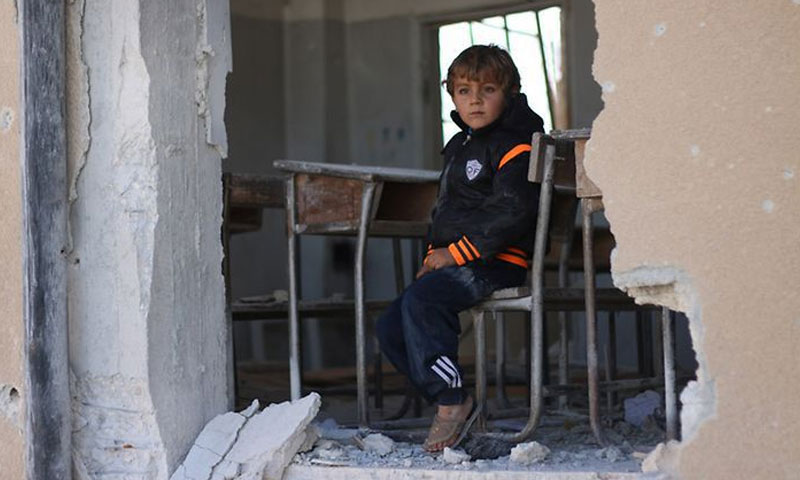

Enab Baladi – Alia Kamal al-Din
The mark left on Fayha’s face caused by a slap went away after a short period, leaving an unforgettable scar upon her heart, which made her remember 11 years later the physical abuse incident she was exposed to in the winter of 2009.
At that time, Fayha’s mathematics teacher asked her to come out and solve a problem on the blackboard, but Fayha was scared and confused that she would not be able to figure out the right answer, and she might be disgraced in front of her classmates. Therefore, she stopped talking and froze, so the teacher slapped her in the face with a shower of verbal insults.
Fayha said that she was just a nine-year-old student at a primary school in the Syrian capital, Damascus, yet, she could not forget this incident of verbal and physical abuse.
Fayha’s story is not unique in Syrian society. Still, the same story repeats itself across the country, as an attempt made by teachers to punish their young pupils or even students in advanced school levels.
Enab Baladi has got 30 testimonies from female and male Syrian students between the ages of 18 and 50 years old, all of whom confirmed that they had been exposed to violence at some stage of their school life and talked about their hate-filled incidents in the school. Some students hate certain school subjects because of the repeated acts of physical and verbal violence perpetrated by their teachers.
Enab Baladi also got testimonies from a small age group, which stressed that violence in schools continues at the present time. However, more than 30 years have passed since the issuance of the ministerial decisions and orders to all Syrian schools against the use of all forms of corporal punishment.
Societal impacts of violence
The fear and pressure caused by corporal punishment are two of the main reasons why children do not like to go to school or suffer from school phobia, which in many cases leads to school dropout and low school attendance rates, especially in high schools.
Students who receive or witness corporal punishment also have poor academic performance, according to a study conducted by the British organization “Young Lives,” specializing in children and young people in 2015.
A forty-year-old woman told Enab Baladi that she still remembers all the details of her stories about violence perpetrated in the first grade in the Serghaya area of Rif Dimashq in 1980.
“The teacher used to bring water in the winter, while the snow was falling outside, and he put it on the feet of the lazy students before beating them with a stick.” But the students did not improve their academic performance and remained lazy in all their educational levels, as she put it.
The woman studied between 1980 and 1985 and likened violence in the primary schools of Rif Dimashq to the violence practiced by the Air Force Intelligence branches.
Another young woman from the city of Aleppo spoke about her childhood in 2010 when she was a student in a school. She was complaining that whatever she did, she was not able to satisfy her teacher; the teacher was very moody and bad-tempered. She also highlighted that reprimanding students does not provide them with any instructions on how to improve their academic performance next time.
The young woman explained that corporal punishment makes children feel humiliated and ashamed of themselves. She said, “I felt once ashamed when I was beaten with a stick for being a bit late to the class.
One of the worst consequences of child abuse lies in furthering the cycle of violence. Plus, the legacy of violence is passed on from generation to another, because children who experience violence are at higher risk of being abusive in their future relationships in some cases. They could be aggressive in the course of their daily life if they do not receive treatment, the psychologist Siba Bitar told Enab Baladi.
Physical abuse
In an opinion poll conducted by Enab Baladi on its Facebook page, in which more than 2000 users participated. The question raised was: “Have you been subjected to verbal or physical abuse by your teachers during your study journey in Syria?”
The majority of the users said yes by 86%, while 14% of all participants answered that they did not experience any kind of violence on their study journey. Several users shared their stories of violent incidents that ended with physical injuries, such as an incident in which the teacher broke the arm of a student. The student, from that moment, started to hate the school. Later, the student left the school due to the repeated acts of the physical violence he experienced.
The stories shared by Enab Baladi’s followers included all kinds of verbal insults and physical violence. One of the respondents said that the teacher broke the stick on his hand when he was a fourth-grade student. Besides, the teacher used to tie him up with a foulard—Foulard is a necktie or scarf, that Syrian students wear according to their education level—to one of his lazy classmates in the class, making them walk around the classes as a sort of insult. One of the users described her school in the city of Damascus as a slaughterhouse because girls were beaten and physically abused.
Another user talked about whipping him with a black telephone wire and hoses.
Serious psychological effects
Physical abuse can cause a series of mental health disorders and diseases, whose circle expands according to the circumstances surrounding each victim of school violence, as confirmed by the psychologist Fatima Asaad al-Asaad, during her talk to Enab Baladi about the psychological effects on children exposed to violence.
The physical abuse causes children’s weak personality and low-self esteem; plus, the child lives with negative feelings such as “Stupidity, impotence, failure to take actions, badness, inability to accept others.”
The adverse effects of physical abuse lead to a regression in skills, academic performance, and behavior.
This regression may result in the erosion of a distinct talent or skill that a child may have after verbal or physical abuse.
According to al-Asaad, fear is one of the strongest feelings that a child experiences due to violence as the child fears to take any action because he does not expect the reaction he will receive because the sense of insecurity makes him afraid of anyone older than him or who has authority over him.
In a study conducted by the American University of “Michigan” in 2018, corporal punishment during childhood has been found to activate “toxic stress,” in children, which may change their brain structure during early childhood, and may negatively affect their cognitive and linguistic abilities, social and emotional development, and health mental.
Childhood abuse is also associated with negative health outcomes and chronic diseases in adult life, such as heart disease, cancer, chronic lung disease, obesity, or high blood pressure.
Child maltreatment has also been shown to have negative health outcomes. Moreover, there is a link between childhood trauma and chronic illnesses in adulthood, such as heart disease, cancer, chronic lung disease, obesity, or high blood pressure.
The study stated that irrefutable evidence leaves no doubt that physical punishment by teachers limits the welfare and education of children, and their ability to become successful and productive adults in their future life.
Does Syrian law do justice to children?
There is no explicit article in the Syrian Penal Code protecting a child against the abuse of his parents or anyone else, for society’s most vulnerable group, according to Syrian lawyer Abdo Abdel Ghafour in a previous interview with Enab Baladi. He pointed out the existence of a single one article in the penal code allowing parents to beat their children under the pretext of “beating for the sake of discipline.”
Article 185 of the Syrian Penal Code allows “discipline measures inflicted on children by their parents and teachers in following the general custom.” Lawyer Abdo Abdel Ghafour explained that this law gives the perpetrator a “justified excuse” in case the child was beaten by one of his parents or teachers without leaving any marks. Thus, the penalty is fully waived under the preceding article.
According to the United Nations Convention on the Rights of the Child (CRC) (2007), corporal punishment is a violation of children’s rights. Article 19 of the convention states that states parties shall take all suitable procedures to protect the child from all forms of physical and mental violence. In contrast, Article 28 states that school discipline is administered in a manner consistent with the child’s “human dignity.”
Corporal punishment is prohibited by law in schools in 128 countries, and it is permitted in 69 other countries, according to the Global Initiative to End All Corporal Punishment of Children.
Social norms support school violence and teachers without education tools…What is the solution?
The psychologist, Fatima Asaad al-Asaad, pointed out that one of the essential reasons that perpetuate violence in society is that violence against children is considered something acceptable and permissible in schools. People consider school violence as a natural matter, and there is no problem that a teacher slaps, swears, or humiliates his students while no one objects.
To solve this problem, awareness should be raised among parents about the risks of ignoring the violence to which their children are exposed to. Parents must defend and fight for their children’s rights if they are physically abused; they also should teach their children to refuse the use of corporal punishment against them, and this is considered essential for the child to overcome the negative feelings he experiences.
The psychologist, Siba Bitar, said the spread of school violence refers to the teacher’s lack of adequate educational methods that help him deal with the various problems or personalities.
Al-Asaad suggests a solution to stop violence against their children that both teachers and families should ensure that “violence against children is by no means acceptable,” and thus, schools can be a safe learning environment in which children can express their thoughts and ideas.
In order to prevent violence against children, children’s confidence must be enhanced as well as his physical strength to defend themselves. A space of trust should also be built between families and their children; consequently, children feel that they are positively connected and start sharing the details of their days. All these factors together help them to recover the rights of children if they are exposed to violence.
The steps to provide treatment for children exposed to violence depend on the child’s actual exposure to violence in schools, and the number of times and severity. Treatment ranges from simple instructional and educational sessions to specialized treatment sessions, according to Bitar.
if you think the article contain wrong information or you have additional details Send Correction
النسخة العربية من المقال
-
Follow us :
Most viewed
- Turkey moves to deploy air defense system in Syria
- Intentions for popular resistance amid Israeli escalation in southern Syria
- Washington's conditions raise questions about its openness and goals in Syria
- SDF to withdraw from Aleppo neighborhoods following agreement with Damascus
- Syrian returnees celebrate first Eid after liberation

















 A
A
A
A
A
A



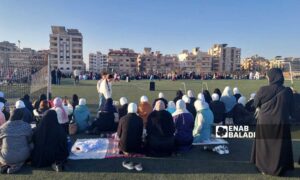
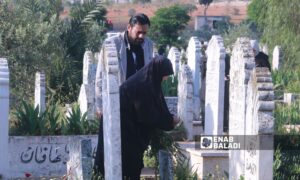
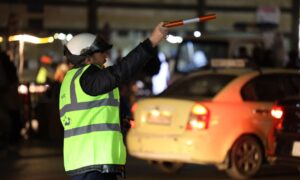
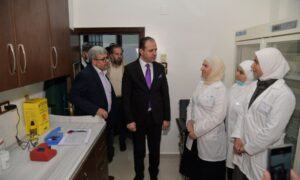
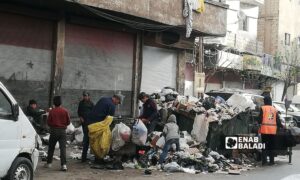
 More Society
More Society